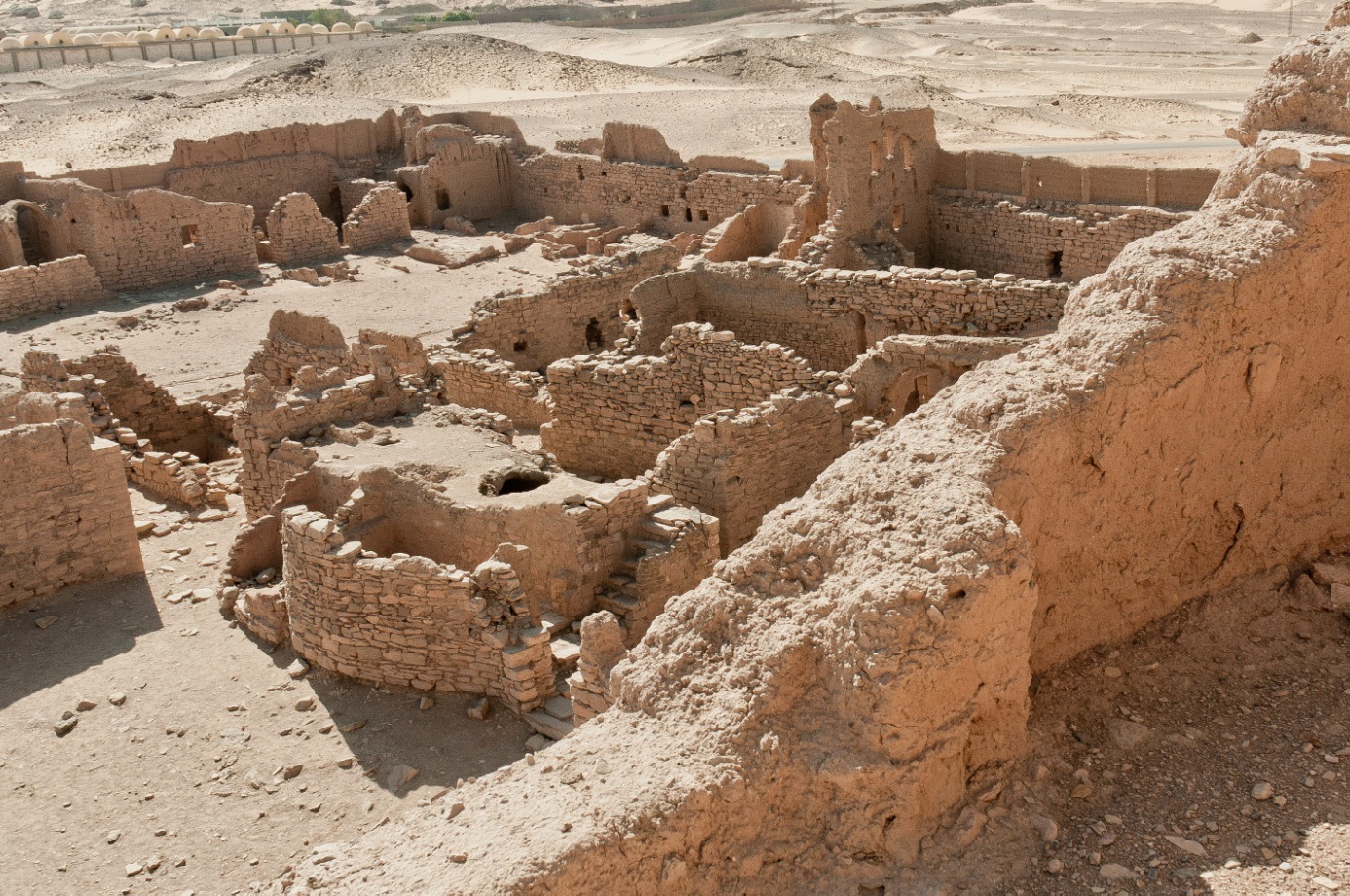Using architectural (Structure-from-Motion/Drawings) and archaeological (Excavations) research methods this thesis will discusses the different phases of building, shifting room use and its associated economic installations of Deir Anba Hadra.
Research

Deir Anba Hadra | Photo: Sebastian Olschok
The role of monasteries in the Egyptian economy – as well as the technological revolution of the 9th century in Egypt – is to be assessed based on the archaeological and structural investigations of the largest economic complex in the Deir Anba Hadra near Aswan ( “Simeons Monastery”). It is the largest and best preserved monastery in the area and was excavated / partly reconstructed in the 1920s. Deir Anba Hadra was erected a little more than a kilometer from the Nile on two terraces of a sandstone plateau in the desert.
Using the “Structure from Motion” – Method 3D imaging models were calculated, referenced and generated. These Models where used to create orthographic images of floor and wall surfaces. Photographically inaccessible building edges, which were not adequately covered by the orthographic images, were supplemented by tachymetric surveys. The architectural survey was then drawn up on this basis manually on site. This allowed unclear situations to be detected directly and control measures taken.
Using architectural (Structure-from-Motion/Drawings) and archaeological (Excavations) research methods this thesis will discusses the different phases of building, shifting room use and its associated economic installations. The economic complex on the upper terrace of Deir Anba Hadra gradually evolved from a single elongated building, similar in its floor and surrounding pedestals of the monastery church. Whether it was an oratorio, which was later used up, or a storage room still needs to be examined. In the further course of use, additional rooms were added to the central building and equipped with production facilities. So far, seven ovens and fireplaces, five mills (including a sesame mill) and four basins have been identified. Further installations where used for storage, baking and cooking, as well as grinding. A press which would be essential for sesame oil production could not yet be found.
This Ph.D. thesis is being written within the program “Landscape Archaeology and Architecture” (LAA) of the Berlin Graduate School of Ancient Studies (BerGSAS).
